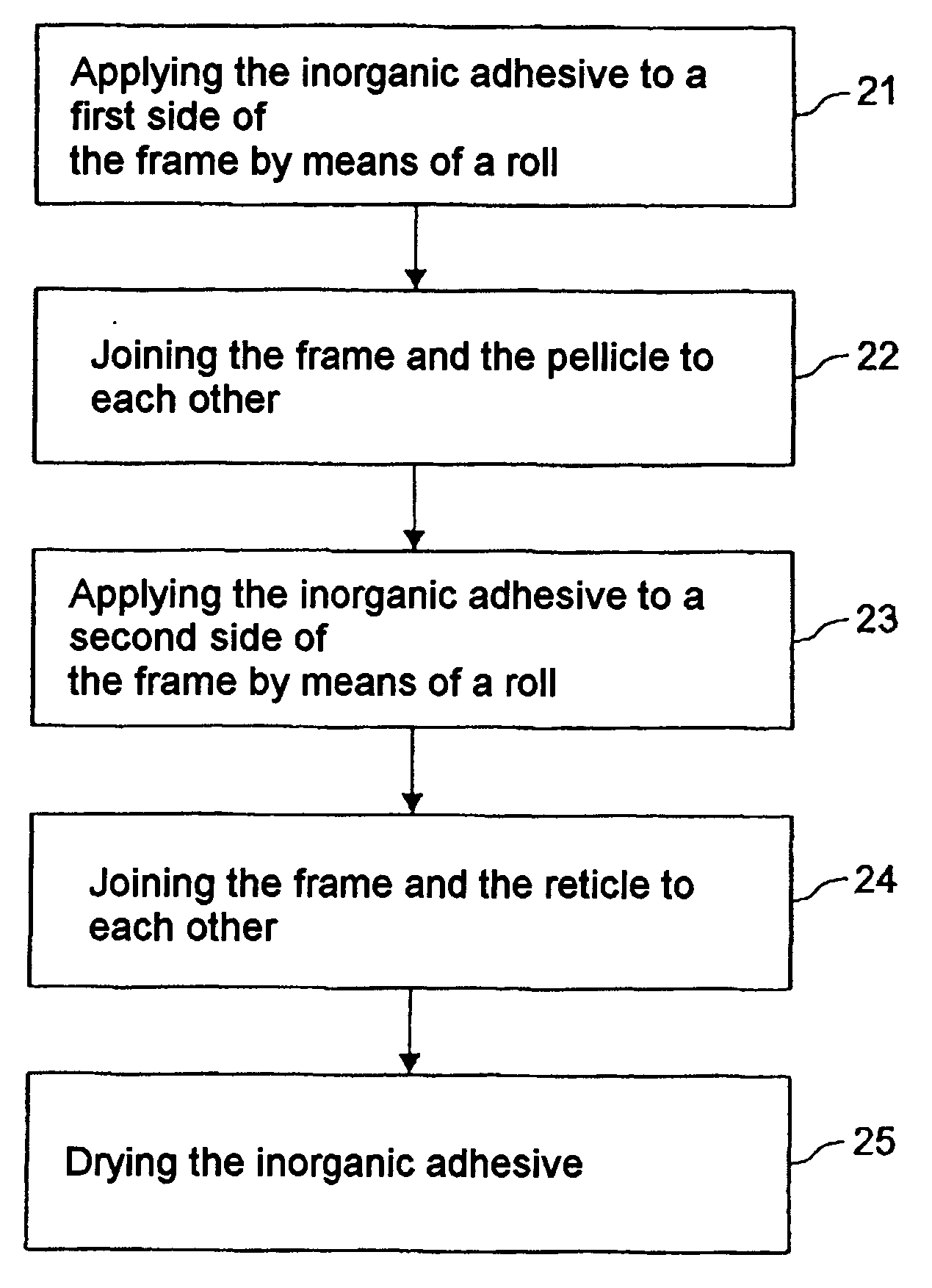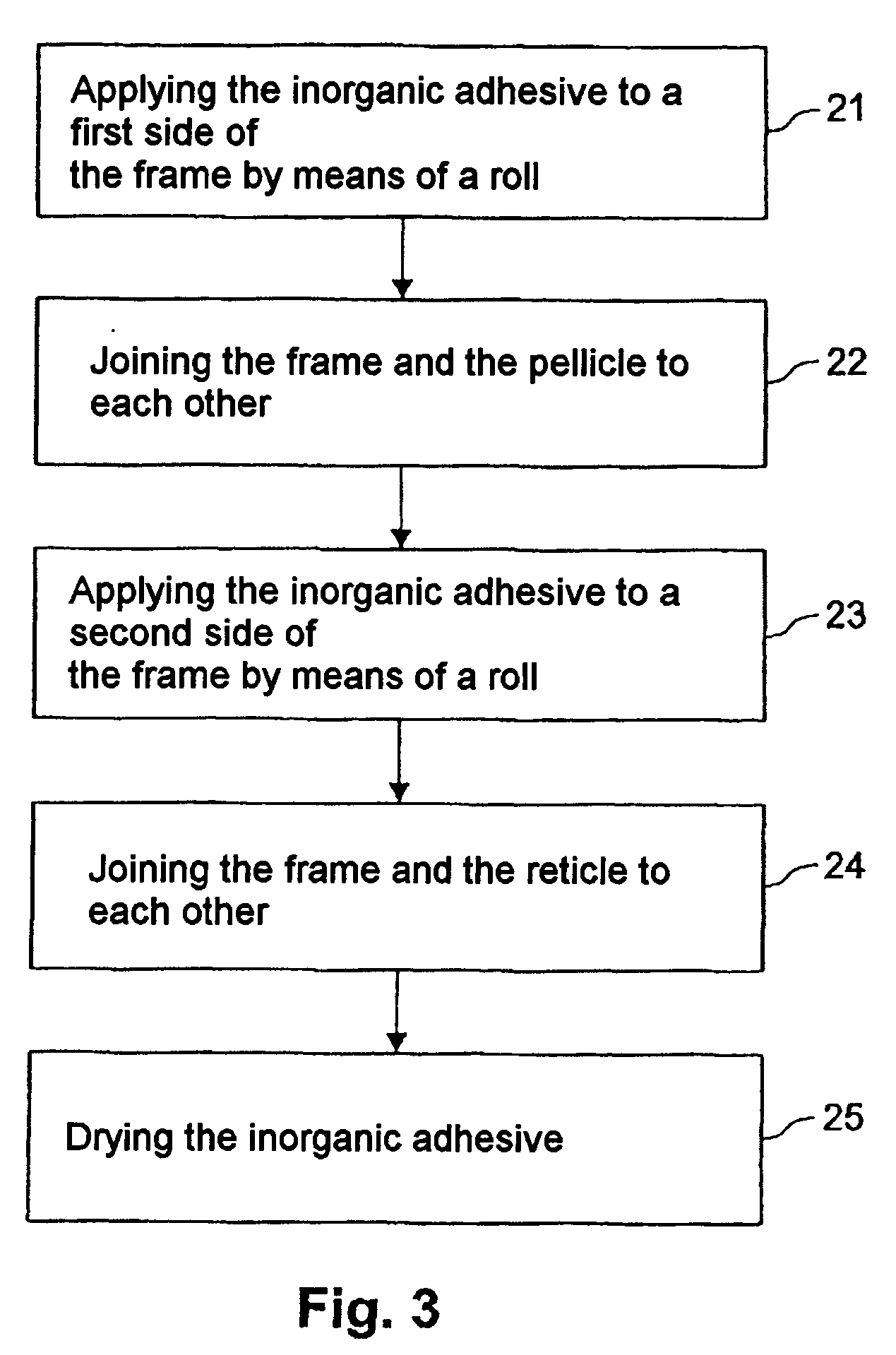Gassing-free exposure mask
- Summary
- Abstract
- Description
- Claims
- Application Information
AI Technical Summary
Benefits of technology
Problems solved by technology
Method used
Image
Examples
first embodiment
[0035]FIG. 3 shows a flow chart of a method according to the invention for producing the exposure mask 1 illustrated in FIG. 1. In this case, in a first method step 21, the inorganic adhesive is applied to a first side of the frame with the aid of a roll. One important precondition is that the areas to which the inorganic adhesive is applied are clean and have previously been degreased or cleaned as required, in order to achieve a good adhesive strength of the adhesive. The roll used is preferably comprised of cross-linked polyvinyl alcohol, which permits the adhesive to be applied easily to a surface as a thin layer. After that, in a second method step 22, the corresponding sides of the frame and of the pellicle to be bonded are joined to each other.
[0036] In a third method step 23, the inorganic adhesive is applied to a second side of the frame and then, in a fourth method step 24, the corresponding sides of the frame and of the reticle to be bonded are joined to each other.
[0037...
second embodiment
[0038] Alternatively, a method according to the invention for producing the exposure mask illustrated in FIG. 1 can be carried out, of which the flow chart is illustrated in FIG. 4. In this case, in a first method step 31, the inorganic adhesive is applied to a first side of the frame with a metering cannula and then, in a second method step 32, the corresponding surfaces of the frame and of the pellicle to be bonded are joined to each other. The inorganic adhesive may be applied more precisely to the surface with a metering cannula as opposed to a roll.
[0039] Following that, in a third method step 33, the inorganic adhesive is dried before, in a fourth method step 34, the adhesive is applied with the metering cannula to a second side of the frame, the corresponding sides of the frame and of the reticle to be bonded are joined to each other in a fifth method step 35, and the adhesive is again dried in a sixth method step 36.
[0040] The additional drying of the adhesive in the third ...
PUM
| Property | Measurement | Unit |
|---|---|---|
| Temperature | aaaaa | aaaaa |
| Length | aaaaa | aaaaa |
| Length | aaaaa | aaaaa |
Abstract
Description
Claims
Application Information
 Login to View More
Login to View More - R&D
- Intellectual Property
- Life Sciences
- Materials
- Tech Scout
- Unparalleled Data Quality
- Higher Quality Content
- 60% Fewer Hallucinations
Browse by: Latest US Patents, China's latest patents, Technical Efficacy Thesaurus, Application Domain, Technology Topic, Popular Technical Reports.
© 2025 PatSnap. All rights reserved.Legal|Privacy policy|Modern Slavery Act Transparency Statement|Sitemap|About US| Contact US: help@patsnap.com



